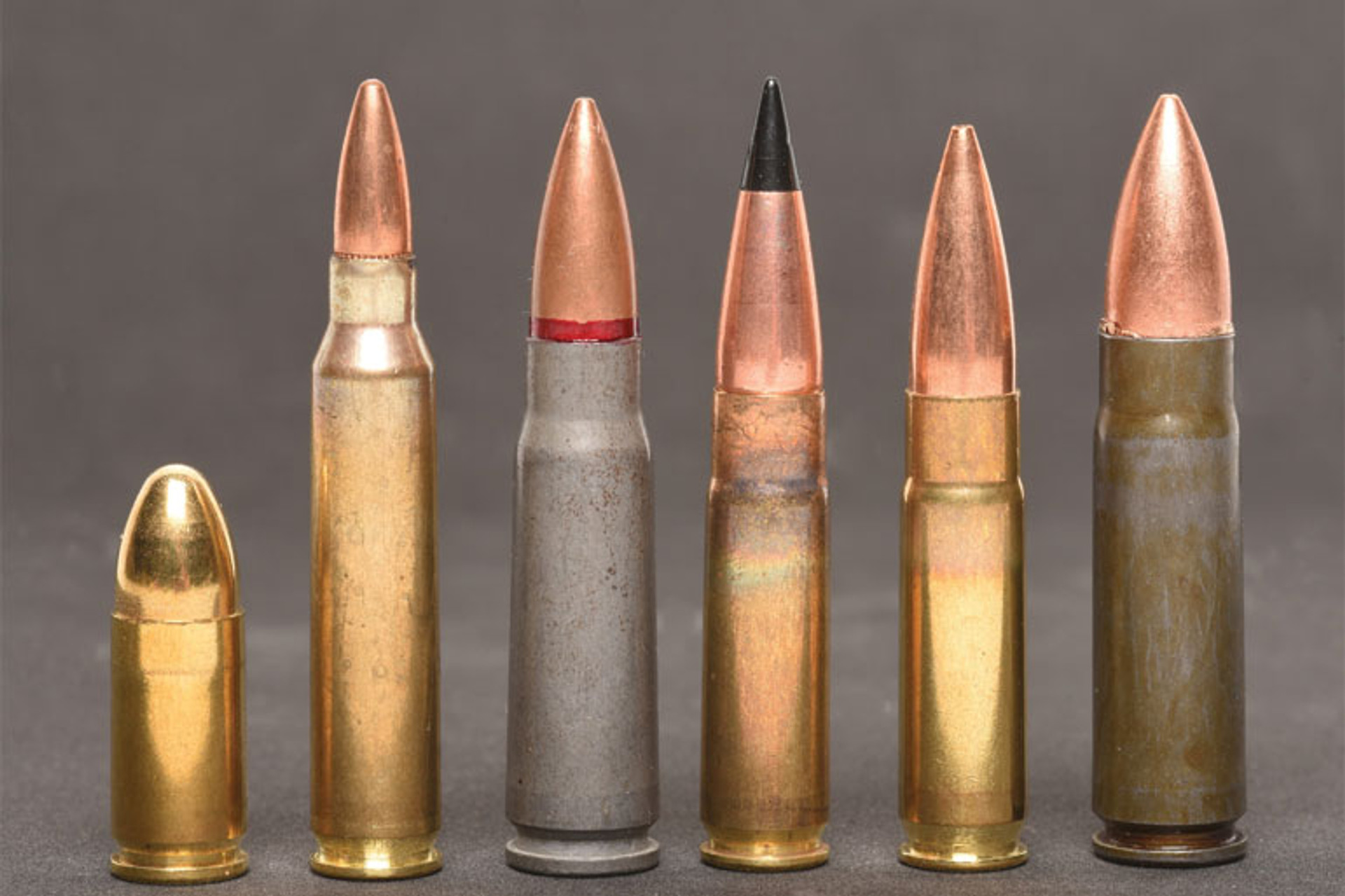.300 Blackout vs. 9mm Parabellum: Which One’s Best?
Let’s talk ammo. For virtually every caliber on the market today, there is a comparable ammunition type. In this case, we are diving into a head-to-head between .300 Blackout vs. 9mm Parabellum. Which one is the better option?
To answer that question, we need to explore both ammo types, their pros and cons, and determine their ideal uses.
Claiming one is bigger than the other is not a worthwhile comparison. We need to look into the technical specifications, including weight, velocity, and kinetic energy.
.300 Blackout — A Closer Inspection
Let us begin with everyone’s favorite: ballistic data.
Weight
- Supersonic — 125 grains
- Subsonic — 220 grains
Velocity
- Supersonic — 2,215 ft/2
- Subsonic — 1,010 ft/2
Energy
- Supersonic — 1,350 lb.-ft
- Subsonic 500 lb.-ft
As you can see by the numbers here, .300 Blackout is an impressive round. But it is a rifle round. So, with that in mind, how does it compare to 9mm Parabellum?
9mm Parabellum — The Competitor
While a pistol round, 9mm Parabellum has a reputation to uphold. Let us dive into the ballistic data to see if it does.
Weight
- Supersonic — 115 grains
- Subsonic — 147 grains
Velocity
- Supersonic — 1,525 ft/2
- Subsonic — 1,073 ft/2
Energy
- Supersonic — 594 lb.-ft
- Subsonic 376 lb.-ft
Overall, 9mm Parabellum is an excellent handgun round. But as we all know, the majority of handguns are not nearly as powerful as a rifle.
.300 Blackout vs. 9mm Parabellum
Unfortunately, there is no clear winner when you compare a rifle round with a handgun round. Both have their ideal uses, and both have a few disadvantages compared to the other.
For now, let us explore where the 9mm Parabellum is the better option. And believe it or not, it comes out on top in a few aspects, namely ease of handling and cost.
Cost
When exploring each round’s cost, we look at the price per round and the firearm necessary to use said round. In the case of 9mm, the winner, in this case, 9mm rounds are cheaper per box, and you can score a 9mm carbine for far less expensive than what a .300 Blackout rifle costs today.
Handling
Depending on your intended use, 9mm typically reigns supreme with ease of handling. Handling comes down to barrel length, ergonomics, and recoil control. As a smaller round, paired with carbine ergonomics, 9mm Parabellum is a clear winner. Conversely, .300 Blackout is only available in AR-15-style rifles and bolt-action rifles used for hunting.
Popularity
Overall, .300 Blackout is a relatively popular caliber. For the AR-15, most shooters use .223 Remington or 5.56x45 NATO, as they are more common and widespread—cost-effective rounds to shoot regularly. Regarding popularity, 9mm Parabellum wins due to the sheer number of handguns and carbines that fire the round. Take, for instance, the Sig Sauer MPX—an immensely popular 9mm carbine that is both fun to shoot and efficient.
What is the verdict? It would appear as if 9mm Parabellum is the clear winner here, right? Conversely, if you want a dual-purpose firearm—a rifle and carbine—then .300 Blackout pistols are exceptional options. Compared to the usual AR-15 rounds, .300 Blackout is equally as expensive.
Furthermore, 9mm is not known for its immense stopping power or penetration capabilities. Now, that is not to say 9mm will not put down a target. It will. But if your singular goal is stopping power against, say, small game while hunting, then .300 Blackout wins.
In the end, both calibers have their uses. Which one you choose solely depends on the firearm you own or intend to buy and your intent.
If you feel .300 Blackout is the clear winner for your needs, consider building your AR-15 using an 80% lower receiver. Building an AR-15 is a straightforward and fun task that ensures your rifle is up to your precise specifications.





 Back to List
Back to List